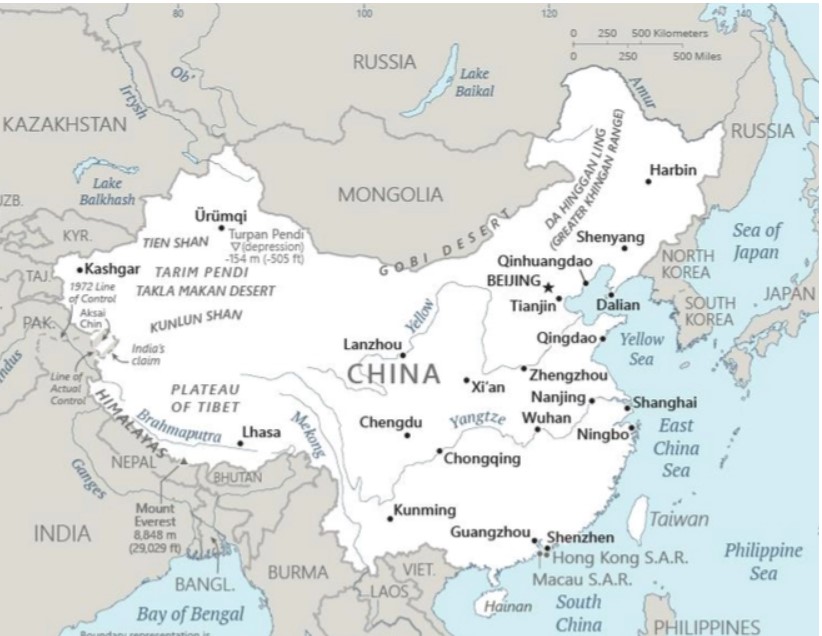
The United States has finally seen the Federal Reserve begin its interest cutting cycle, with more cuts to come and more of the Fed’s securities to be sold off. This represents the formal end of quantitative tightening, at least before considering more aggressive debt sales. Now it appears that China has decided to finally take stronger efforts to bolster its ailing economy.
The move in Chinese ADSs and China funds and ETFs was more than impressive on Tuesday. It may have even been too impressive as a knee-jerk reaction to a very weak market. The Hang Seng Index (Hong Kong) rose 753 points (up 4.1%) to end at 19,000.56. The SSE Composite Index in Shanghai rose 114.21 points (up 4.1%) to 2,863.13.
Tactical Bulls wants to know if the stimulus measures in China simply equate to too large of a move on a relative basis. When you translate these gains on the same percentages to U.S. markets, it would be the equivalent of a 1,700 point one-day gain for the Dow and more than 233 points in a day for the S&P 500. We do have to keep in mind that the SSE (Shanghai Index) was down 13% from May alone before the Fed’s move last week and before Tuesday’s move.
THE PBOC STIMULUS REKINDLED
First and foremost, what exactly did China promise to do for its stimulus package?
The PBOC announced a 50 basis-point rate cut to the reserve ratio (percent of assets/cash banks must keep on hand). Some economists opined that this may free up close to $140 billion in liquidity (PBOC used $142B estimate). There is also talk of an additional 25 to 50 basis point cut which may be seen in Q4 — another $70 billion to $140 billion freed up).
Another assist given by the PBOC was a cut to existing mortgage rates by about 50 basis-points. This would save Chinese homeowners about $21 billion per year. Also in property, the required down payment for second homes was cut to 15% from the recent 25%.
The PBOC further noted that it will further strengthen a new program of buying unsold homes by state-owned enterprises in an effort to convert to more affordable housing. If successful, this will greatly lower the unsold housing inventory that has gone stagnant and hurt others who may have wanted to sell but cannot because of low prices.
While Tuesday’s news is shown to be the strongest since the post-Covid measures, it is still a very strong move. Consider that the Dow rose just 1.25% and the S&P 500 rose 1.7% the prior week in their next-day reaction to the FOMC’s 50 basis-point rate cut.
MARKET REACTIONS – TOO MUCH? JUST A START?
Copper and oil responded sharply on the news. China is usually considered to be the main driver of global copper demand. China’s oil demand has been weaker than expected for much of 2024. Copper futures were up about 2.6% to $4.45 per pound late in the day and front-month (CL1) oil futures closed up $1.19 (1.7%) at $71.56 on Tuesday.
What is hard to fathom is just how much excitement there was in the most active and valuable Chinese ADSs and also the funds and ETFs which track China.
The iShares China Large-Cap ETF (NYSEArca: FXI) closed up 9.8% with a 5x volume spike to 155 million shares. The KraneShares CSI China Internet ETF (NYSEArca: KWEB) closed up 10.3% at $30.04 with a 6x volume spike of over 83 million shares. Even the iShares MSCI Hong Kong ETF (NYSEArca: EWH) closed up 4.67% at $17.72 on a 2.5x volume spike of 5.56 million shares. The Xtrackers Harvest CSI 300 China A-Shares ETF (NYSE: ASHR) saw its shares rise 8% to $24.94 with nearly a 10x volume spike of about 22.8 million shares.
Now let’s see some of China’s hot stock gains on the day.
EV-carmaker NIO Inc. (NYSE: NIO) rose 11.6% to $5.94 with more than 2x volume spike to 111 million shares. The move was strong enough that lithium stocks rose as well — Global X Lithium & Battery Tech ETF (NYSEArca: LIT) rose 5.9% to $39.47 on a 2x volume spike of 655,000 shares.
Alibaba Group Holding Limited (NYSE: BABA) was up 7.9% to $97.19 on more than a 3x volume spike of 45.5 million shares. Suddenly Alibaba is back to a 52-week high yet still down 70% from its 2020 peak during the pandemic lockdowns.
JD.com, Inc. (NASDAQ: JD) rose an even sharper 13.9% to $33.890 with almost a 4x volume spike of 45 million shares. This ecommerce player is now within 5% of its 52-week high, but is also down about 70% from its early-2021 peak above $100.
Baidu, Inc. (NASDAQ: BIDU) is often thought of as “the Google of China” on a historical basis. It just took a key analyst rating downgrade this same morning. Baidu shares still surged by 7.4% to $94.81 with more than a 2x volume spike to over 7.7 million shares.
Even shares of the China Fund Inc. (NYSE: CHN) rose 9.3% to $11.00, within about 6% of a 52-week high. The CHN fund traded only about 83,000 shares but that is still a 3x volume spike. The Templeton Dragon Fund, Inc. (NYSE: TDF), another leading closed-end fund, closed up about 7% at $8.45 with a 3x volume spike of 131,000 shares.